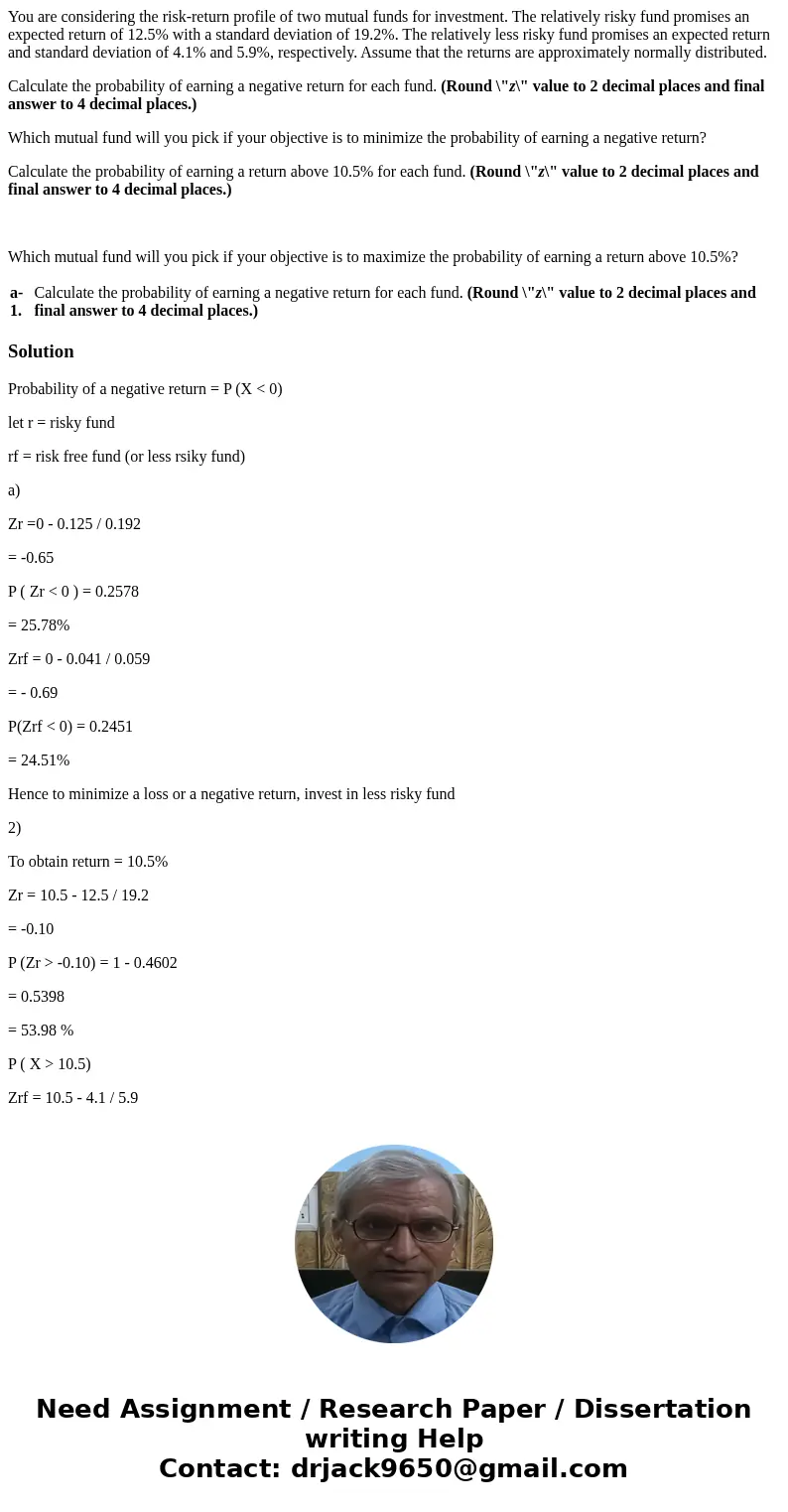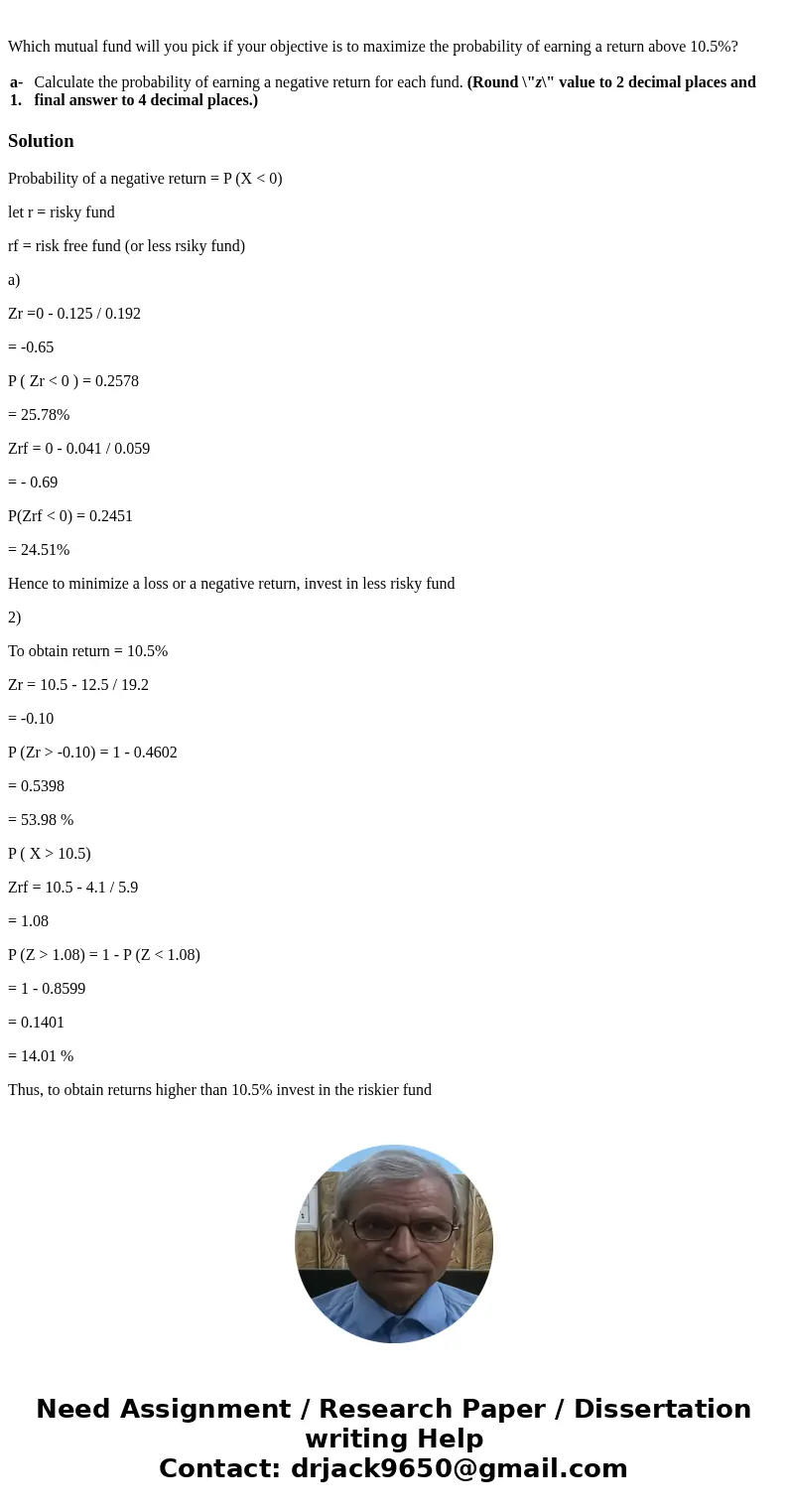You are considering the riskreturn profile of two mutual fun
You are considering the risk-return profile of two mutual funds for investment. The relatively risky fund promises an expected return of 12.5% with a standard deviation of 19.2%. The relatively less risky fund promises an expected return and standard deviation of 4.1% and 5.9%, respectively. Assume that the returns are approximately normally distributed.
Calculate the probability of earning a negative return for each fund. (Round \"z\" value to 2 decimal places and final answer to 4 decimal places.)
Which mutual fund will you pick if your objective is to minimize the probability of earning a negative return?
Calculate the probability of earning a return above 10.5% for each fund. (Round \"z\" value to 2 decimal places and final answer to 4 decimal places.)
Which mutual fund will you pick if your objective is to maximize the probability of earning a return above 10.5%?
| a-1. | Calculate the probability of earning a negative return for each fund. (Round \"z\" value to 2 decimal places and final answer to 4 decimal places.) |
Solution
Probability of a negative return = P (X < 0)
let r = risky fund
rf = risk free fund (or less rsiky fund)
a)
Zr =0 - 0.125 / 0.192
= -0.65
P ( Zr < 0 ) = 0.2578
= 25.78%
Zrf = 0 - 0.041 / 0.059
= - 0.69
P(Zrf < 0) = 0.2451
= 24.51%
Hence to minimize a loss or a negative return, invest in less risky fund
2)
To obtain return = 10.5%
Zr = 10.5 - 12.5 / 19.2
= -0.10
P (Zr > -0.10) = 1 - 0.4602
= 0.5398
= 53.98 %
P ( X > 10.5)
Zrf = 10.5 - 4.1 / 5.9
= 1.08
P (Z > 1.08) = 1 - P (Z < 1.08)
= 1 - 0.8599
= 0.1401
= 14.01 %
Thus, to obtain returns higher than 10.5% invest in the riskier fund


 Homework Sourse
Homework Sourse